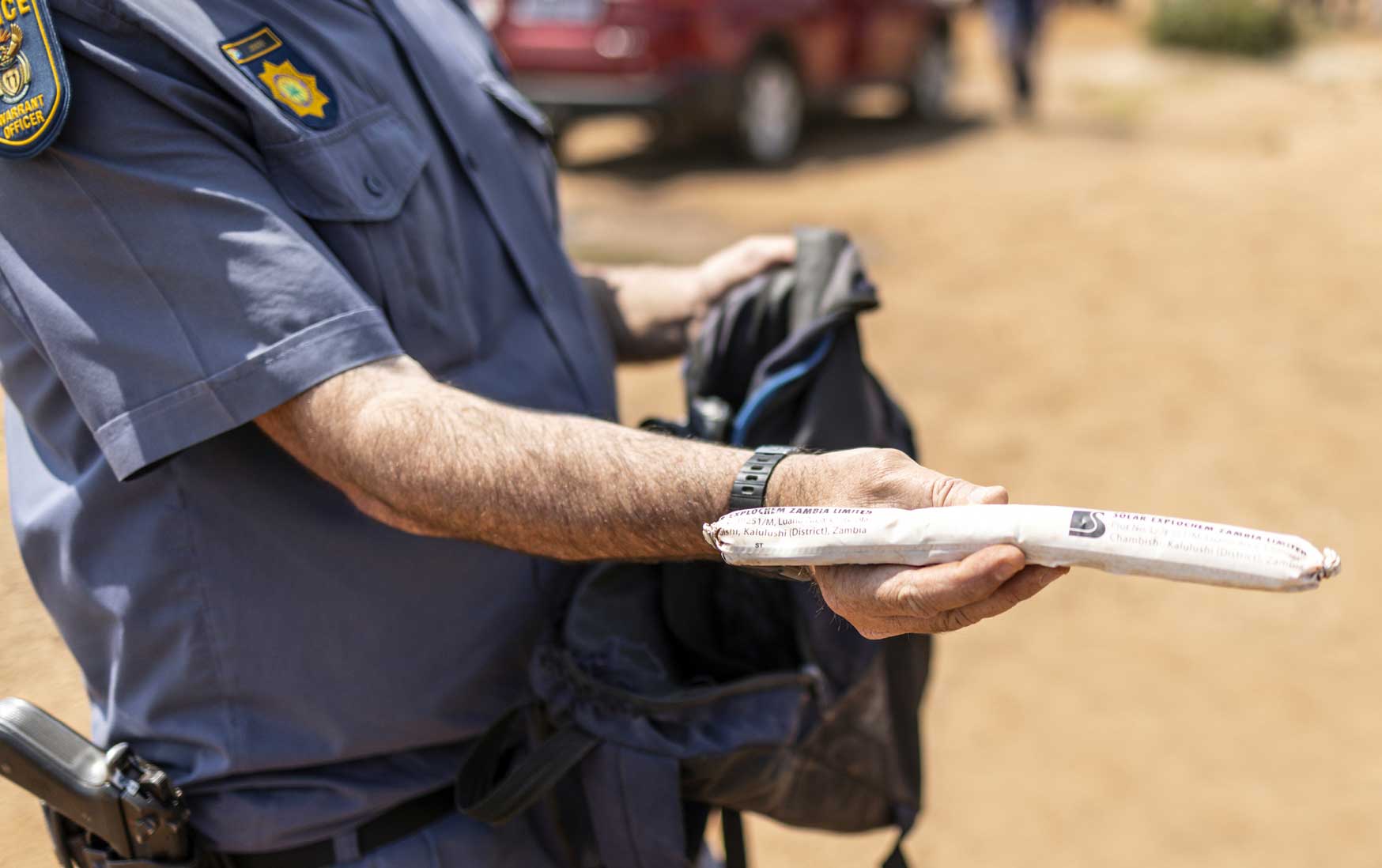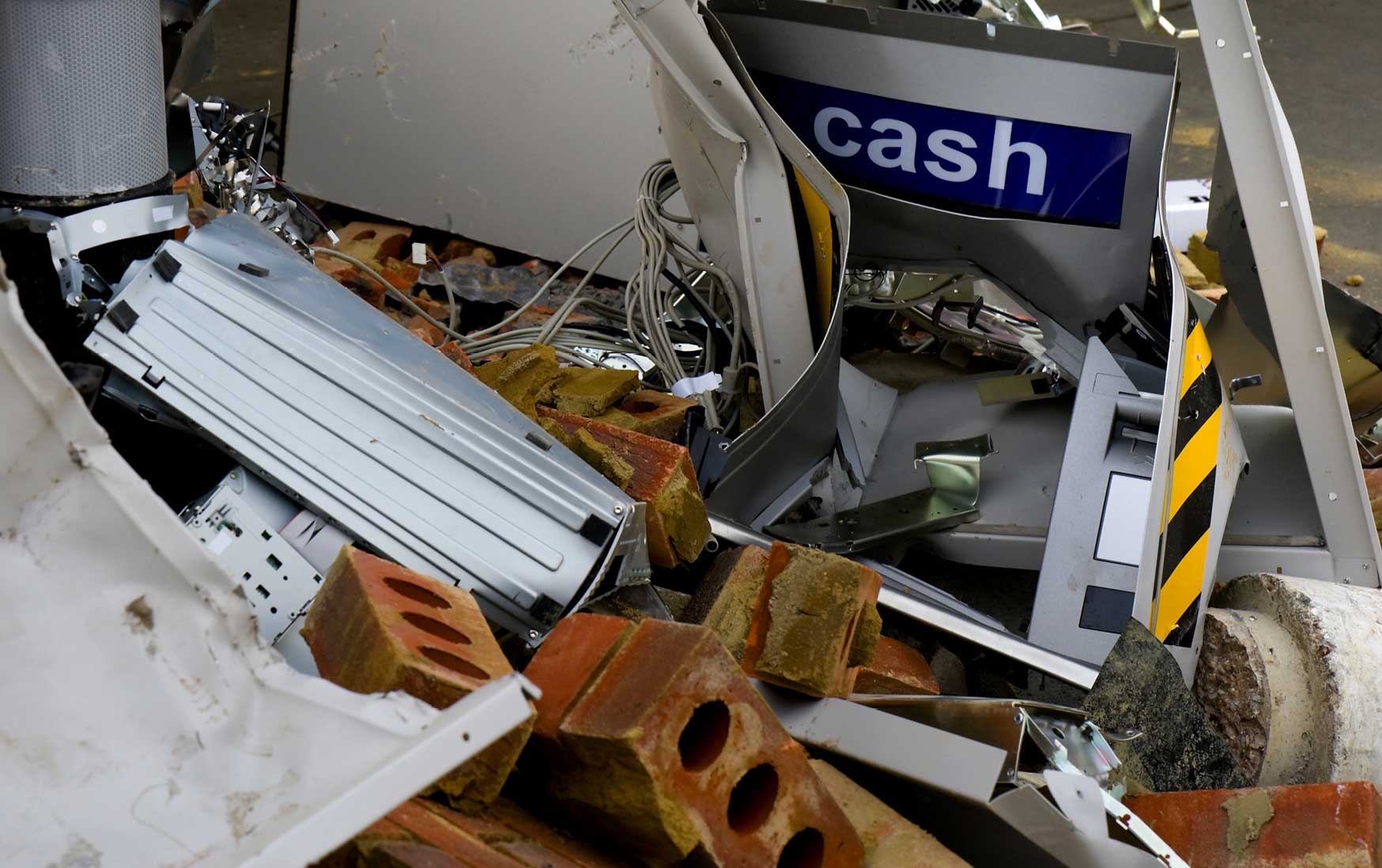Fortunate Sibanda is cramped in a minibus taxi with 15 other passengers. Hot and stuffy, the passengers’ eyes are fixed on the police and customs officers on the road in front of them. Fortunate nervously holds on to her bag with the money they gave her – money to bribe the officers at the border post.
She did not bring many clothes and belongings with her, as she had to leave space for the heavy bags the syndicate gave her in Bulawayo. They had not told her what was in the bags; she was instructed that she just had to hand them to Lovemore, who would contact her when she arrived in Benoni, and he would pay her in South African rands. For Fortunate, this money would enable her to buy food and other groceries badly needed back in Zimbabwe.
Fortunate had heard about two other women who were arrested at the border post with bags like these. Charged with “smuggling explosives”, they were sentenced to 10 years in prison in a foreign country. For Fortunate, whose children were hungry, it was a risk she had to take.
South Africa is a leading mining country on the continent – and in the world – with estimated mineral reserves worth R20.3 trillion ($2.5 trillion), and is estimated to have the world’s fifth-largest mining sector in terms of GDP. With an economy that is built on gold and diamond mining, with the fourth-largest diamond industry in the world, a natural consequence is an immense hunger for commercial explosives. According to statistics, South Africa consumes more than 300 million tons of commercial explosives every year.

A warrant officer of the South African Police Service (SAPS) shows commercial grade explosive used in mining recovered from the shack of a suspected illegal miner in Florida, near Johannesburg. Photo: Marco Longari/AFP
However, the drive for commercial explosives is not limited to mining and other legitimate industries. Transnational organised syndicates that engage in illegal mining, ATM bombing, and cash-in-transit robbery crime have also created a huge demand for commercial explosives.
In terms of South Africa’s Explosives Act 26 of 1965 and Regulations of 1972, it is illegal to be in possession of, import, transport, store, or use authorised commercial explosives or accessories. In terms of the UN Classification that is endorsed by member countries, certain classes of explosives may not be transported or stored in the same vehicle or storage facility.
The economic impact of the illegal use of explosives is massive. South African banks lost R40 million in 2015 due to ATM bombings and robberies, and more than 360 ATM attacks took place in 2021. In 70% of the incidents, explosives were involved. Cash-in-transit robberies where explosives are used to gain access to the cash cost South Africa more than R1 billion between 2008 and 2016. The South African state and mining sector lose an estimated R7 billion a year due to illegal mining, emphasising the need to curb this threat.
In South Africa, three departments are responsible for the control of explosives; the South African Police Service (SAPS), the Department of Mineral Resources (DMR), and the Department of Employment and Labour (DEL).
In South Africa, illegal explosives are predominantly from neighbouring countries, more specifically Zimbabwe. While the control of explosives in South Africa is fairly good, the same cannot be said of some of its neighbours.
In South Africa, the Chief Inspector of Explosives has to regulate the use of explosives with outdated legislation and regulations. Parliament has approved a new explosives act, Act 15 of 2003, but up until now the minister of police has failed to implement the regulations, hampering more effective control of explosives. For instance, in the proposed regulations, it will be mandatory for every explosive cartridge and accessory to be individually barcoded to facilitate better tracking and control. The section commander of explosive control in the SAPS, Colonel Jurie van Staden, has emphasised the importance of tracking and tracing technology prescribed by the new regulations, and he has indicated that it would strengthen the hand of the inspectors and curb the smuggling of illegal explosives.
According to a senior bomb technician, most of the smuggled explosives and accessories are manufactured in neighbouring countries or are imported back to South Africa. Many of these were originally legally exported from South Africa to countries like Zimbabwe, where they were then stolen and smuggled back to South Africa. Barcoded explosives as required by the new regulations would reduce the leakages from legal supplies.
According to explosives legislation and regulations, different categories of explosives may not be transported or stored in the same vehicle or building. Smugglers, however, do not adhere to safety regulations and endanger not only themselves but also unsuspecting fellow passengers and other road users.

A wrecked ATM after robbers used explosives to get at the cash. Photo: Getty Images/AFP
Syndicates also target transport trucks. On May 31 2021, for example, a Zimbabwean truck driver was arrested at South Africa’s Beitbridge border post in possession of explosives and accessories with a street value of R110,000. He was recently sentenced to 15 years in prison.
In January this year, the South African National Defence Force apprehended a woman and two porters at their base camp near the border post. In their possession were commercial explosive cartridges, reels of detonating cord, and connector-capped fuse assemblies, which if detonated, would have caused a massive explosion and numerous human casualties.
According to a senior police officer who spoke on condition of anonymity, it seems that women are targeted as couriers because they are not easily suspected as smugglers. A state prosecutor confirmed this, adding that in some cases they travelled with children. He pointed out that women were predominantly used as smugglers on minibus taxis and public buses, while male truck drivers were used to smuggle explosives with their cargo.
These are, however, not the only smuggling methods syndicates use. On 27 July 2020, a hearse driver was arrested with almost R800,000 worth of illegal explosives in his vehicle when he crossed the border at Beitbridge.
South Africa is not the only target of explosives smuggling, however. On 2 November 2022, a group of people were arrested near Chimoio in Mozambique with a consignment of commercial explosives and accessories destined to be used in illegal mining activities in the country. The smugglers were Mozambican and Zimbabwe nationals. This indicates that explosives smuggling has become a regional phenomenon in the Southern African Development Community (SADC) and needs to be addressed in that context.
To address the serious challenge of smuggling explosives, SADC should take the lead and demonstrate political will. The harmonisation of legislations and regulations amongst member states will undoubtedly facilitate more conducive explosives control. A draft SADC protocol on explosives control in the region might facilitate this harmonisation, and its implementation plan could include mechanisms for enhancing cooperation between the various national bodies responsible for explosives control.
In the absence of such a protocol, the best tool currently available is the SADC Transnational Organised Crime Strategy, adopted by the responsible ministers in June 2021 and a valuable tool in addressing the challenge. However, this strategy will only prove to be effective if countries follow and implement it.
The smuggling of explosives across South Africa’s borders poses a severe challenge to law enforcement and the public, as it is an indispensable tool in the hands of ATM bombers, cash-in-transit gangs, and illegal miners. Addressing this threat will no doubt reduce the economic losses incurred by mines, businesses, and banks in South Africa.











